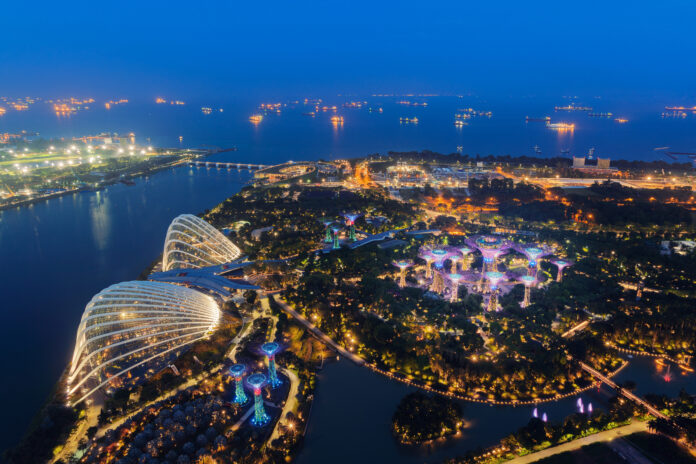Lessons from Dubai, Shenzhen and Singapore
Frontpage Journal | Business Insights
Colombo Port City is not just a construction site on reclaimed land. It is the most ambitious economic experiment in Sri Lanka’s post-independence history. With its promise of modern infrastructure, streamlined regulations, and an open invitation to global capital, the Port City is being positioned as a Special Economic Zone (SEZ) designed to reboot the country’s economic narrative. But turning that potential into performance requires more than architecture and ambition. It demands regulatory vision, geopolitical finesse, and above all, a
clear understanding of what has worked and not worked, In similar economic jurisdictions around the world.
Dubai, Shenzhen, and Singapore provide valuable case studies. Each of these locations transformed themselves through a mixture of bold regulatory reform, targeted incentives, and long-term infrastructure planning. They navigated risks, managed foreign influence, and created regulatory certainty for investors. The success of Colombo Port City will depend on how well Sri Lanka can adapt such lessons without undermining its own sovereignty or institutional integrity.
Dubai International Financial Centre (DIFC) was not built overnight. It succeeded because of its autonomous legal system based on English common law, clear tax advantages, and seamless business registration processes. Most importantly, it became a hub by ensuring that international investors could trust the system. It offered predictability and protection. Colombo Port City must learn to offer the same: transparent regulations, a level playing field, and insulation from political interference. This is crucial if Sri Lanka wants to attract institutional investors, global tech firms, and financial institutions.
Shenzhen, once a fishing village, became the engine of China’s economic miracle through a carefully managed SEZ model. It allowed market experimentation, welcomed foreign investment, and absorbed global manufacturing. But what truly set Shenzhen apart was its integration into broader national economic strategies. It didn’t stand alone; it was a part of China’s export-led growth model and benefitted from state support, infrastructure connectivity, and policy coherence. Colombo Port City too must not become a disconnected enclave. It must connect to the rest of the economy, to ports, to airports, to universities, and to the entrepreneurial networks of the island.
Singapore’s journey, meanwhile, shows how a city-state can become a global financial and logistics hub through smart governance. Its efficiency, talent development, and reputation for rule of law made it an enduring magnet for capital. For Colombo Port City to emulate any part of Singapore’s model, the government must prioritize legal clarity, anti-corruption mechanisms, and long-term policy stability. Ad-hoc decisions or politically motivated interventions will derail trust and stall investor confidence.

The Port City has already generated concern over legal jurisdiction, transparency of investment agreements, and long-term land ownership. While Sri Lanka needs foreign investment, it also needs safeguards. Regulatory capture, weak oversight, and opaque partnerships will not create a globally competitive SEZ. A carefully constructed legal and economic framework must provide checks and balances, especially in land use, tax holidays, and financial services regulation.
This is where the proposed Financial Zone within the Port City becomes a focal point. If designed with foresight, it could become a sandbox for fintech innovation, green finance, and digital banking. But if rushed or politicized, it risks becoming a haven for illicit flows or a missed opportunity. Policymakers must involve independent regulators, global legal experts, and industry practitioners when drafting the framework.
The economic potential is enormous. A fully functioning Port City could generate billions in FDI, create high-value jobs, expand tax revenue, and reposition Sri Lanka on the global investment map. It could host arbitration centres, data parks, startup accelerators, and offshore campuses. But all of this depends on how the foundational decisions are made today. Sri Lanka should also avoid the trap of making the Port City an exclusive zone for elites. Inclusive development is critical. Training local talent, ensuring employment linkages, and using Port City revenues to uplift public services elsewhere in the country will determine Whether this becomes a national asset or a gated anomaly.
As the Fourth Industrial Revolution reshapes global finance, logistics, and innovation, Colombo Port City represents an opportunity to align Sri Lanka with the new economic frontier. It can be a place where blockchain startups meet impact investors, where global arbitrators meet regional exporters. But only if it is built on rules that are modern, fair, and future-ready.
The world is watching. Success will not be measured by skyline or sales, but by credibility, governance, and the returns it brings to the broader Sri Lankan economy. If Colombo Port City is to rise as Asia’s next financial gateway, it must not just copy the models of Dubai, Shenzhen or Singapore. It must evolve into a uniquely Sri Lankan success story, built on integrity, strategy, and vision.




